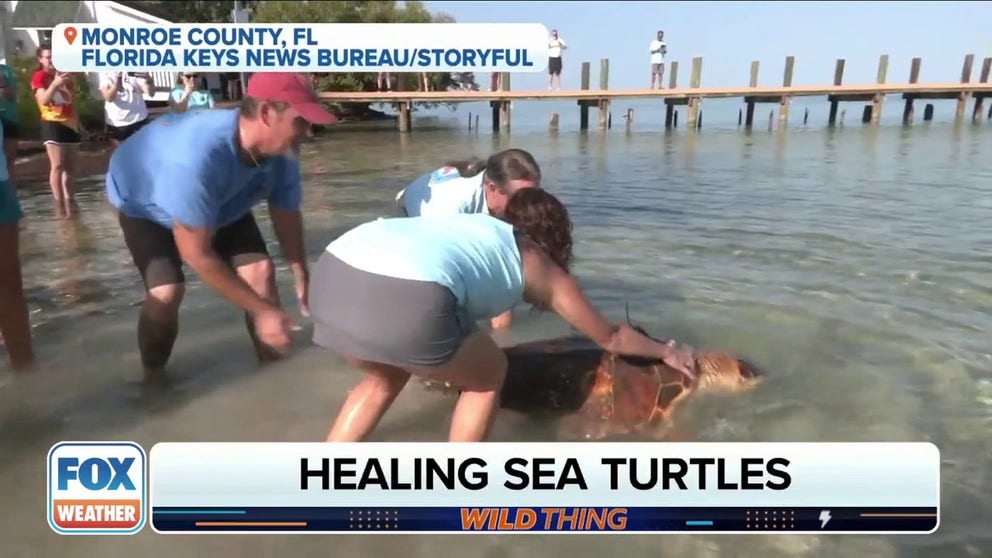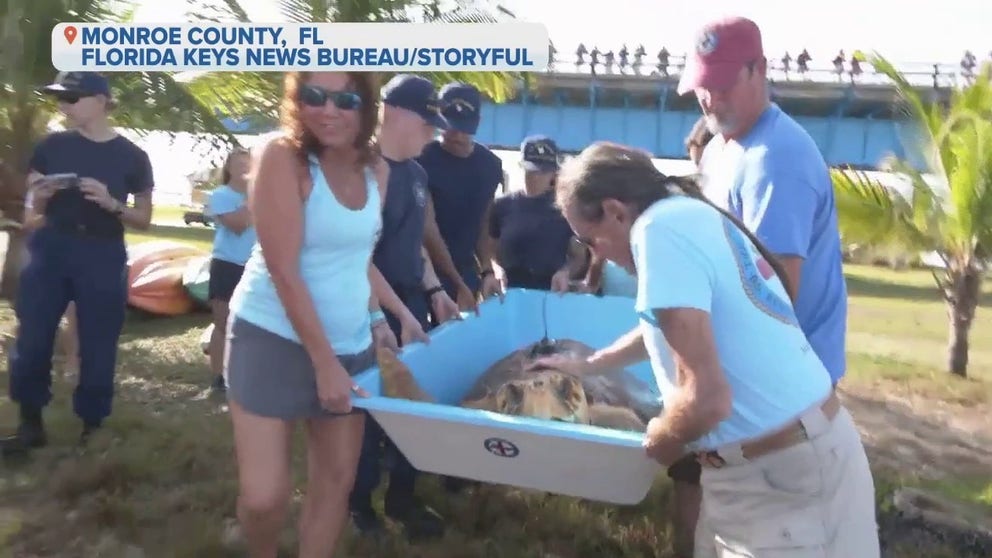Gender reveal: Scientists say sand determines the sex of sea turtles
A group in the Florida Keys rescues and releases the turtles like Sheldon back into the wild. Breeding males are essential lately after a scarcity of male hatchlings.
Rescuing 50-year-old sea turtle
The Turtle Hospital in Marathon, Florida rescued 50-year-old Sheldon and released him into the wild just in time for mating season. Manager Betty Zirkelbach shared with FOX Weather why mating season is so important to the species.
MARATHON, Fla. – While it seems strange to be concerned about summer heat in the dead of winter, the Turtle Hospital is exactly that. They just rescued and released Sheldon, a 230 pound, 50-year-old loggerhead sea turtle back into the wild just in time for mating season. Recently scientists have seen a concerning ratio of males to females.
"Right now we're seeing mostly girl sea turtles being born because of the hotter summers," Betty Zirkelbach, manager of The Turtle Hospital, told FOX Weather. "So it's important to get Sheldon out there, so he can find the ladies and make more."
Rescued sea turtle released into wild
Sheldon finally hits the waves after the Turtle Hospital disentangled him from an trap line and nursed him back to health.
Breeding season usually starts around late March. Zirkelbach said this year looks like it will start earlier. After mating, females lay eggs in nests in the warm sand to incubate for two months.
"The temperature of the sand determines the sex or gender of a sea turtle," said Zirkelbach. "We like to say girls are hot and boys are cool because in warmer summers you get mostly females and the cooler summers, mostly males."
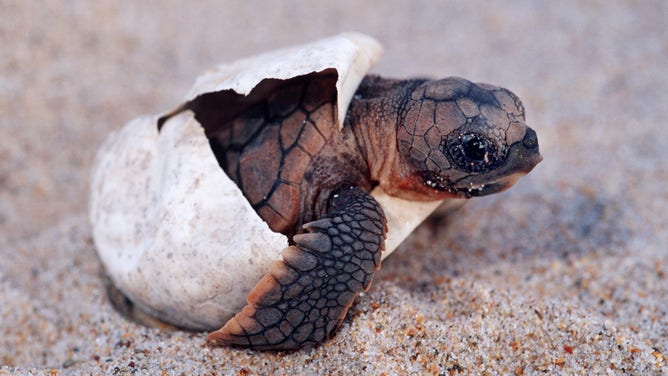
A loggerhead hatchling heading for the water.
(Mark Conlin/VW PICS/UIG via Getty Image / Getty Images)
Florida’s average summer temperature appears to be on an upward trend. In the past three years; 2019 was the 12th warmest, 2020 the 6th warmest and 2021 the 5th warmest on record. NOAA keeps records back to the turn of the last century. (Average temperature for the summer is the average of the daily high and low temperature averaged over the season.)

Notice the warming trend on Florida's average summer temperature.
"The scientists who study sea turtle hatchlings and eggs have only found female turtles being hatched [over the last three years]," said Zirkelbach. "Only one in 5,000 sea turtles makes it in our oceans to adulthood."
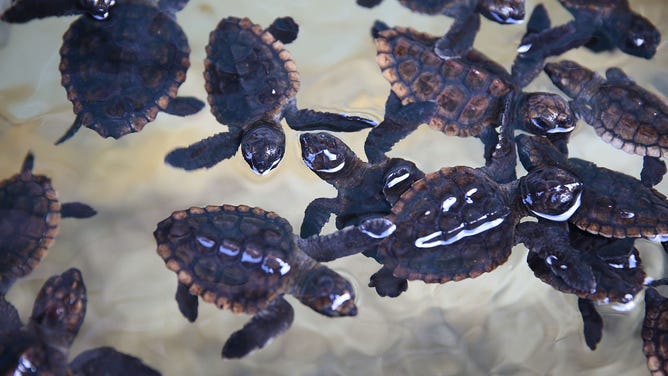
Hundreds of baby sea turtles waiting to be released by a nature center in Boca Raton, Florida.
( Joe Raedle/Getty Images)
So, eligible bachelors are even more important now, even at 50-years-old. The Endangered Species Act classifies Northwest Atlantic Loggerheads as threatened. Threatened means that a species is likely to become endangered in the foreseeable future.
Males hit maturity around 20 and females around 35. They spend their youth in the open ocean foraging then return to the beaches where they were hatched to breed.
Ladies breed every two to three years. Every two weeks they lay about 100 eggs per nest. In a season have three to five nests.

A female loggerhead lays about 100 eggs per nest.
(Mark Conlin/VW PICS/UIG via Getty Image / Getty Images)
The Southeast U.S. is home to the largest loggerhead nest population in the world with over 100,000 nests per year. The second-largest nest population in Oman only has 10,000 nests per year.
The Turtle Hospital rescued Sheldon after he became entangled in a crab trap and line. NOAA Fisheries stated that the loggerhead’s biggest threat is becoming entangled in fishing lines and traps.
"It's just amazing to take an animal that otherwise may not have survived, for instance, Sheldon was entangled in a trap line," said Zirkelbach. "He very well could have drowned or at the very least, that flipper be amputated."
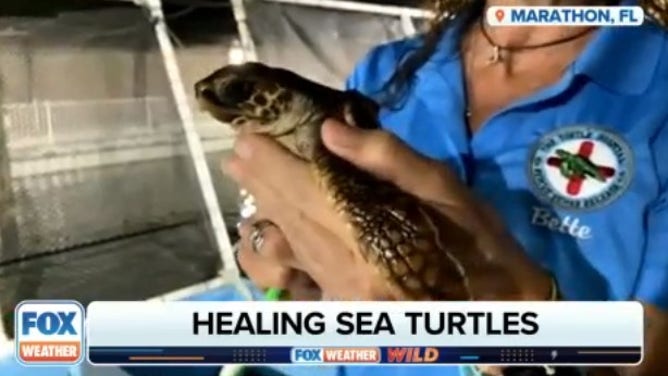
The Turtle Hospital rescued David, a loggerhead turtle after he was disoriented by artificial light after hatching.
(FOX Weather)
One of Sheldon’s younger brethren, David, came to the Turtle Hospital when he became disoriented by artificial light and couldn’t find the sea. Hatchlings navigate away from the darkest areas (usually the silhouette of a sand dune) to the brightest area (usually stars above the sea.) But, beach lighting can send them in the wrong direction.
The hospital has rescued and released over 1,500 sea turtles since its 1986 founding. You can follow Sheldon's tracker on their website.
